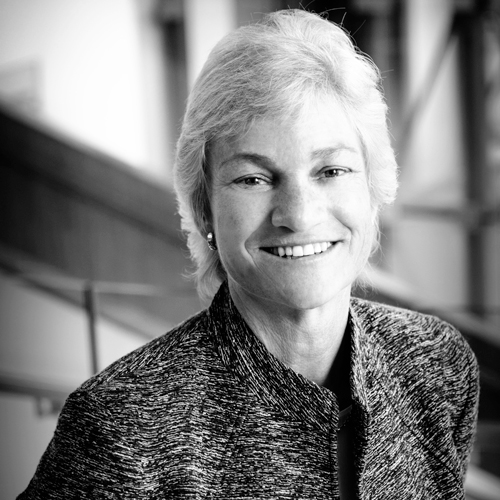It takes special skills and expertise to successfully navigate the challenges of the energy industry. Sidd Manjeshwar, Dynegy’s treasurer and vice president of finance, may have been built specifically for his job. Educated in engineering and having worked nearly a decade in energy-focused investment banking, his analytical mind, comprehensive financial knowledge, and collaborative approach have helped transform the electric utility company that emerged from bankruptcy just four years ago.
Dynegy was a subscale, 10-gigawatt (GW) independent power producer valued at $2.5 billion. Today, however, it is valued at approximately $8.5 billion having repositioned and expanded its portfolio in the best competitive markets throughout the United States. It has also tripled its power generation footprint to approximately 32 GW net (upon completion of a recently announced acquisition). At the same time, cost structures have increased just $45 million. “It’s been an incredible transformation since our emergence from bankruptcy. It is very exciting to be part of the team that has successfully grown and repositioned the company to navigate a very challenging market,” Manjeshwar says.
Manjeshwar views the changes of the last several years as opportunities for the management team to demonstrate leadership in both prudent financial management and clarity of vision. Following the philosophy of “one team, one goal,” management worked together to identify and take advantage of timely opportunities, which resulted in several major acquisitions during the last three years.
First, it was Ameren Energy Resources’ 4.1 GW of environmentally compliant coal generation and retail marketing business, which complemented Dynegy’s fleet and enhanced shareholder upside in a capital-efficient manner. Second, Dynegy acquired the 6.1-GW Duke Energy’s PJM merchant energy fleet for $2.8 billion and the 6.3-GW Energy Capital Partners’ (ECP) Equipower PJM and New England merchant assets for $3.45 billion. As a result, Dynegy’s portfolio expanded in these highly desirable markets to provide shareholders with significant accretion in Adjusted EBITDA (earnings before interest, taxes, depreciation, and amortization) and free cash flow per share.
The third acquisition during this time period was ENGIE’s 9-GW US fossil generation portfolio in a joint venture with ECP, which further diversifies and strengthens Dynegy’s geographic setting by establishing a scale footprint in the Electric Reliability Council of Texas market (scheduled to close in Q4 2016).
Part of what made these transactions possible was Manjeshwar’s development of new banking relationships and his fortification of existing ones. Since 2012, this has enabled Dynegy to secure more than $8.5 billion of financing commitments and $1.75 billion of revolving lines of credit. This was particularly critical in the cases of the Duke and EquiPower transactions, which were both announced on the same night and executed simultaneously. Manjeshwar and the Dynegy team also have been able to negotiate extraordinarily favorable terms, which saved the company more than $125 million over the course of all these transactions.
“Cultivating and managing relationships are key aspects of doing my job successfully. It ultimately affords Dynegy a great deal of strategic flexibility and the freedom to develop best-in-class financing strategies, even in tough markets,” Manjeshwar explains.
He is quick to point out that Dynegy’s flat organizational structure also helps facilitate collaboration and agility. The company’s CEO and CFO are accessible and hands-on, often spearheading development of strategic and financing initiatives, or sitting at the table to lead negotiations. In addition to eliminating the gap between decision-making and execution, the flat structure also means Manjeshwar can work closely with his M&A colleagues, enabling them to call an audible and pivot quickly when the playing field is shifting. This was the case in the ENGIE transaction, during which the partnership with ECP and the accompanying financing strategy were established only days before the final bid was submitted.
All Dynegy employees are engaged in fueling the company’s success through PRIDE (Producing Results through Innovation by Dynegy Employees), which drives the company’s continuous-improvement culture. It encourages each individual to think like a stakeholder and challenge the status quo; to seek initiatives that improve gross margin, reduce costs, and drive improvements. Working with his colleagues, Manjeshwar pioneered several initiatives that helped Dynegy exceed goals for balance sheet efficiencies by $80 million for 2014-2015 and drive down the cost of capital by more than 250 basis points.
Those kinds of accomplishments and the company’s high-value accretive acquisitions haven’t gone unnoticed by the rest of the industry. Dynegy has been recognized by the Houston Business Journal with its award for 2014 CFO of the Year, and it has won International Financing Review’s US High Yield Bond of the Year for the Duke and Equipower transactions’ $5.1 billion triple-tranche bond. It also received what Manjeshwar refers to as the “Oscars of the energy industry”—2015 Platts Global Energy Awards’ Award of Excellence and Strategic Deal of the Year.
“What I really look forward to is continuing to drive shareholder value by helping to optimize the business, right-size the balance sheet, and execute the best possible capital allocation strategies,” says Manjeshwar, who is continuously working to secure Dynegy’s bright future.

